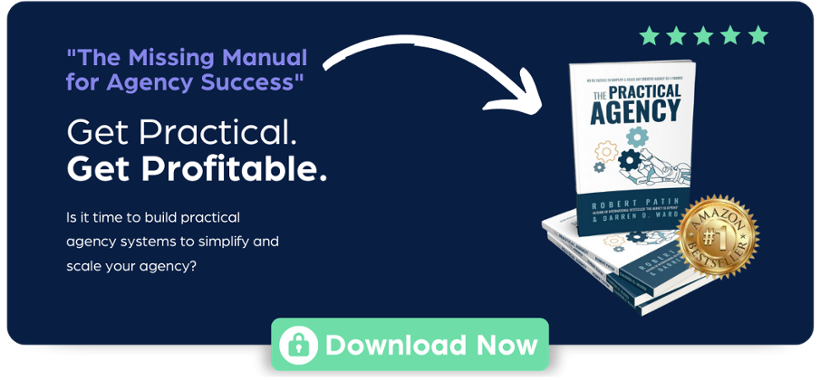Demand Generation vs. Lead Generation: Understanding the Differences for Your Agency
How To Fill Your Pipeline: Lead Generation Secrets for Steady Agency Growth
Navigating the ebb and flow of client work is a familiar frustration for creative agency owners. One month, you're scrambling to find new contracts to keep the lights on; the next, you're swamped with more projects than your team can handle. This feast-or-famine cycle isn't just stressful—it's a clear sign that your sales pipeline lacks the diversity and structure needed for steady, scalable growth.
The root of the issue often lies in confusing lead with demand generation, or misapplying them altogether, leading to wasted efforts and resources. To build a sales pipeline that delivers a steady stream of clients, ready to sign when you need them, requires a strategic balance between sparking broad interest in your services (demand generation) and converting that interest into actionable leads (lead generation).
This post will guide you through the process of refining your sales strategy, emphasizing the importance of nurturing leads at every stage of your sales cycle to achieve a sustainable workflow and scale your agency effectively.
Understanding the Sales Cycle: A Guide for Creative Agencies
Understanding your agency’s sales cycle is a foundational concept to streamline your client acquisition process. Your sales cycle is the journey a potential client embarks on from the moment they first become aware of your agency until they sign on the dotted line.
Grasping this cycle is key to not just attracting leads but also preventing your agency from experiencing extreme periods of overload or drought - and bringing in new business at a manageable rate.
The Stages of the Sales Cycle:
- Awareness: At this initial stage, a prospect recognizes they have a problem that needs solving. For instance, a business might notice their branding doesn't resonate with their target audience anymore. Your agency's visibility at this point, through SEO or content marketing, could place you on their radar as a potential solution.
- Interest: Now, the prospect seeks solutions. They might find your agency through a Google search or on LinkedIn. The content you've strategically placed across these platforms begins to pique their curiosity about your services.
- Consideration: The prospect is actively evaluating their options. They've landed on your website, browsed your portfolio, and read through your case studies. Here, showcasing your successful projects and the breadth of your expertise is crucial.
- Intent: A more concrete step towards a purchase is made. Perhaps the prospect fills out a contact form or initiates a direct conversation about a potential project. This is where personalized communication can significantly impact their decision-making process.
- Evaluation: It's decision time. The prospect, possibly along with their team, reviews your proposal in detail. They're comparing your offer against your competitors'. Demonstrating clear ROI and the unique value your agency brings to the table can set you apart.
- Purchase: The final stage culminates in a signed contract and the commencement of the project. Ensuring a smooth onboarding process here can solidify a positive start to the client relationship.
Not every prospect will be ready to buy immediately—and that's a good thing. Understanding a prospect's current stage in the sales cycle enables you to tailor your engagement strategy. By providing the right information or reassurance at each stage, you ensure that you're nurturing the lead without pushing too hard, too soon.
Navigating the Delicate Balance: Demand vs. Lead Generation
In the realm of creative agency growth, understanding the delicate interplay between demand generation and lead generation is crucial. Let's break down the distinctions and synergies between demand generation and lead generation to ensure you're applying the right pressure at the right time.
Demand Generation: Laying the Groundwork

Demand generation is about creating broad interest in your agency's services. It's the art of making your target audience aware of the problems they face and introducing your agency as a potential solver of those problems.
This stage is not about hard selling but about educating and nurturing potential clients, so keep the focus on:
- Educational Content: Share insights, trends, and case studies that highlight common challenges your target audience faces and how they can be addressed.
- Brand Awareness Campaigns: Utilize social media, SEO, and email marketing to build a familiar and trusted brand presence.
- Establish Rapport: Share personal anecdotes, behind-the-scenes glimpses, or “meet the team” posts to establish a more personalized relationship with your audience.
Lead Generation: Capturing Actionable Interest
Once initial awareness has been captured, lead generation focuses on converting that interest into actionable leads. This is where you encourage potential clients to take a step that signifies their interest in your services, such as signing up for a newsletter or downloading a resource.
- Personalized Engagement: Tailor your communication to address the specific needs and interests of your leads. Use the data gathered during the demand generation phase to segment your audience and create more targeted messages.
- CTAs and Landing Pages: Design compelling calls-to-action and landing pages that make it easy for prospects to take the next step. Ensure these tools are aligned with the specific interests and needs of your target audience, as identified during the demand generation phase.
Both Are Essential For Your Creative Agency’s Success
The synergy between demand generation and lead generation forms the backbone of a successful sales cycle for creative agencies. Without demand generation, lead generation efforts may fall on deaf ears, as potential clients are not yet aware of their needs or your ability to meet them. Conversely, without lead generation, the awareness created by demand generation lacks a clear path to conversion.
Implementing a Balanced Approach
To implement a balanced approach, start by evaluating your current sales cycle. Identify where you might be focusing too heavily on one strategy at the expense of the other. Consider the following actions:
- Review Your Content: Ensure you have a mix of educational, awareness-building content (demand generation) and direct, action-oriented content (lead generation).
- Assess Your CTAs: Are your calls-to-action aligned with the stage of the sales cycle? Make sure they're not too aggressive too soon.
- Analyze Conversion Paths: Look at the journey from visitor to lead on your website. Is there a natural progression from general awareness to specific interest?
By clearly defining and differentiating between demand generation and lead generation, creative agency owners can more effectively guide potential clients through the sales cycle. This strategic patience and understanding ensure that when the time comes to push for conversion, the leads are warm, and the foundation of trust and interest has been solidly built.
Refined Demand Generation Strategies for Creative Agencies
Need to focus more on generating more leads that will generate revenue 3+ months down the road? Consider leveraging more:
-
Content Marketing:
- Blog Posts: Write articles on topics like "2024 Design Trends" or "How Branding Evolves in the Digital Age" to attract businesses looking for forward-thinking agencies.
- Whitepapers and eBooks: Create a comprehensive guide titled "The Ultimate Guide to Rebranding Your Business in the Digital Era," offering it as a free download in exchange for contact details.
-
Social Media Marketing:
- LinkedIn: Share case studies of successful projects, especially those involving notable improvements in client revenue or brand recognition. Use hashtags like #BrandStrategy or #CreativeAgencySuccess to increase visibility.
- Instagram and Facebook: Post before-and-after branding transformation videos, tagging the client (with permission) and using industry-relevant hashtags like #BrandMakeover.
-
SEO and Keyword Strategy:
- Focus on keywords such as "top digital marketing strategies," "best creative agency for [industry]," and "how to improve brand visibility." Use these terms to optimize your website content, blog posts, and meta descriptions.
-
Webinars and Online Workshops:
- Host a webinar that solves a specific problem your target market faces (such as tips to help marketing directors and brand managers looking to enhance their digital presence.
- Host a webinar that solves a specific problem your target market faces (such as tips to help marketing directors and brand managers looking to enhance their digital presence.
Refined Lead Generation Strategies for Creative Agencies
Need to generate some new revenue in the short term? Consider implementing:
-
Personalized Email Marketing:
- Segmented Campaigns: Develop campaigns targeting different industries, such as tech startups or fashion brands, with content tailored to their specific needs, like "5 Branding Mistakes Tech Startups Make."
- Lead Nurturing Sequences: For leads showing interest in branding services, send a sequence that includes case studies of past clients, tips for a successful rebrand, and an invitation to schedule a free consultation.
-
Targeted LinkedIn Outreach:
- Reach out with messaging that references their news and offers insights into how your services can support their growth, such as, "Congrats on the recent funding round! Noticed you're expanding into new markets – our agency specializes in helping brands like yours stand out."
-
Landing Page Optimization:
- Create a landing page with a clear call to action for a free brand audit. Ensure the page addresses specific concerns and trends in the healthcare industry.
-
Lead Magnets:
- Offer a downloadable resource or webinar recording that addresses common branding challenges and solutions in the fintech sector, capturing leads specifically interested in this niche.
-
Retargeting Campaigns:
- Implement retargeting ads targeting visitors who spent time on your portfolio page but didn't contact you. Use creative from your most impactful case studies with copy like "See what we achieved for Brand X – Imagine what we can do for you."
- Implement retargeting ads targeting visitors who spent time on your portfolio page but didn't contact you. Use creative from your most impactful case studies with copy like "See what we achieved for Brand X – Imagine what we can do for you."
Strategizing Success: Mastering the Balance of Demand and Lead Generation
Crafting a reliable sales pipeline is the linchpin of success for any creative agency. The journey from scattered efforts to a strategic, well-oiled client acquisition machine hinges on understanding and implementing a balanced approach to demand and lead generation.
By tailoring your strategies to nurture potential clients from the first spark of awareness to the final decision to engage your services, you not only streamline your sales process but also ensure that each effort is a step towards sustainable growth.
Aligning your demand generation with your lead generation efforts ensures that you're not just casting a wide net, but you're also ready to reel in the right catch—transforming clicks into clients and prospects into profitable partnerships.
Want to learn more? Watch our video below about the Best Agency Sales System for 2024.
Check out our Youtube Channel for more industry insights.










